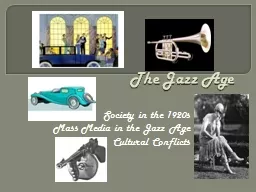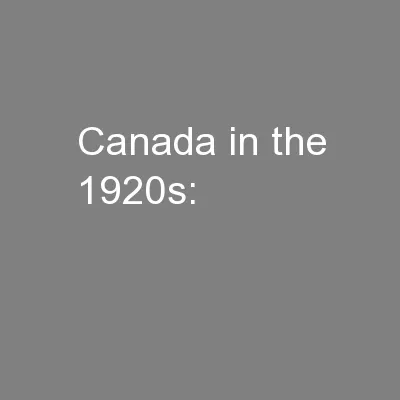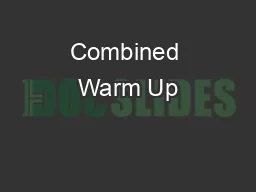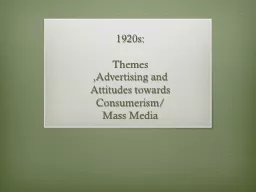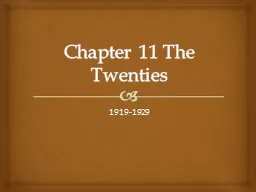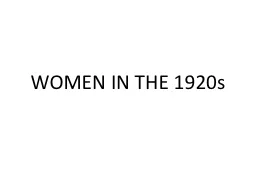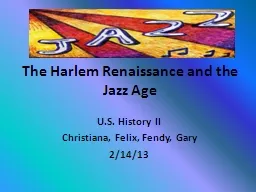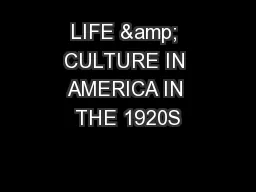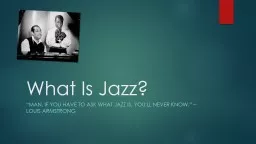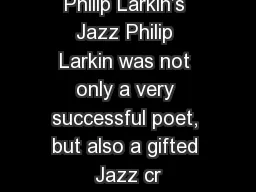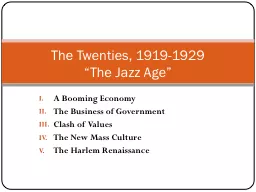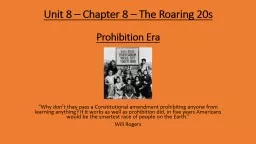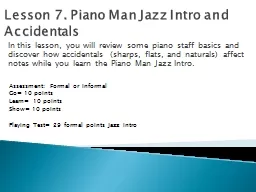PPT-The Jazz Age Society in the 1920s
Author : karlyn-bohler | Published Date : 2018-03-15
Mass Media in the Jazz Age Cultural Conflicts The Jazz Age The 1920s were a time of rapid social change in which many people particularly women adopted new lifestyles
Presentation Embed Code
Download Presentation
Download Presentation The PPT/PDF document "The Jazz Age Society in the 1920s" is the property of its rightful owner. Permission is granted to download and print the materials on this website for personal, non-commercial use only, and to display it on your personal computer provided you do not modify the materials and that you retain all copyright notices contained in the materials. By downloading content from our website, you accept the terms of this agreement.
The Jazz Age Society in the 1920s: Transcript
Download Rules Of Document
"The Jazz Age Society in the 1920s"The content belongs to its owner. You may download and print it for personal use, without modification, and keep all copyright notices. By downloading, you agree to these terms.
Related Documents

